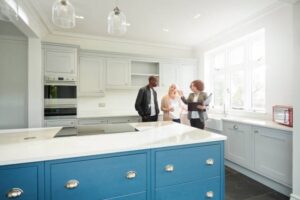A reputable custom home builder can help you design an energy-efficient, eco-friendly home. This will reduce wasted energy usage, greenhouse gas emissions and reliance on finite fossil fuel resources. It can also help you save money on your energy bills.
Passive solar designs, green insulation and water-saving features are some ways that eco-friendly builders in Adelaide can improve your home’s efficiency. For eco-friendly builders Adelaide, check this out.
Energy-efficient homes
 Energy-efficient homes reduce energy use, greenhouse gas emissions and the need for non-renewable resources. They also provide healthier living conditions and offer cost savings. They are built using eco-friendly materials and feature renewable energy solutions, such as solar heating and cooling.
Energy-efficient homes reduce energy use, greenhouse gas emissions and the need for non-renewable resources. They also provide healthier living conditions and offer cost savings. They are built using eco-friendly materials and feature renewable energy solutions, such as solar heating and cooling.
Sustainable design involves thinking about the long term. It includes considering how a home will be used, what future combinations of family members might live there, and occupants’ activities and lifestyles. It also finds the location and climate, with a correct northerly orientation, allowing winter sun in and summer out to prevent overheating.
Eco-friendly builders use the latest sustainable construction methods, such as Structural Insulated Panels (SIPs), making building air-tight and energy-efficient homes easier. They also install solar panels and rainwater tanks. They also choose low VOC paints, which are less toxic to manufacture and will help to improve indoor air quality. They also consider re-using building materials with residual value rather than sending them to landfills.
Reduced carbon footprint
One of the most significant benefits of eco-friendly houses is their reduced carbon footprint. This is because they use less energy than traditional homes and are powered by solar power. This aids to reduce greenhouse gas emissions and combat climate change. In addition, they also have lower energy bills. For eco-friendly builders Adelaide, check this out.
Using recycled materials in construction reduces the carbon footprint of the building. For example, concrete can be replaced with recycled glass or ash from coal-fired power stations to reduce the CO2 production associated with cement manufacture. This also reduces the need to extract sand from rivers, which causes environmental damage.
A new guide developed by UNSW researchers will help the construction industry meet net zero carbon targets for buildings in the short term. The free online resource details a roadmap for achieving a whole-of-life net zero in the built environment by 2040. This will require balancing a building’s operational energy consumption with the renewable energy generated on-site and offsite.
Reduced energy bills
Eco-friendly house designs are a growing trend among homeowners in Adelaide. They offer many benefits, from minimising energy use to reducing environmental impact. These homes can be designed to harness natural elements like sunlight, rainwater, and wind power to reduce their carbon footprint. They can also incorporate smart home technology to monitor and optimise energy usage.
Their energy efficiency makes sustainable homes more cost-effective than conventional homes. They also require less maintenance and have a higher property value. Moreover, they can help reduce carbon emissions and improve Australia’s air quality.
When choosing a builder, look for one committed to sustainability and can demonstrate their work with examples of past projects. Ask them about their processes for reducing waste and sourcing renewable materials. In addition, they should be able to provide a warranty for their green homes. They should also be able to reduce construction costs by implementing innovative design and building methods. For eco-friendly builders Adelaide, check this out.
Healthy indoor environment
We spend over 90 per cent of our lives indoors, so ensuring that we are in healthy environments is essential. This requires consideration of various factors, from air quality to lighting. This knowledge is necessary for architects, designers, occupants, and those who build these spaces. It is also essential to understand the interactions between these factors and the potential risks if they are not considered holistically.
For instance, excessive moisture can lead to mould growth and cause various health problems. There is extensive knowledge on the effects of individual factors, and much of it is reflected in building regulations. However, this knowledge may not consider interactions between factors.
An example of a healthy building is Melbourne Council’s CH2 office in Barangaroo South, which uses solar panels for energy and has plants on the roof garden and indoors. This helps filter the air and ensures occupants breathe clean, fresh air.